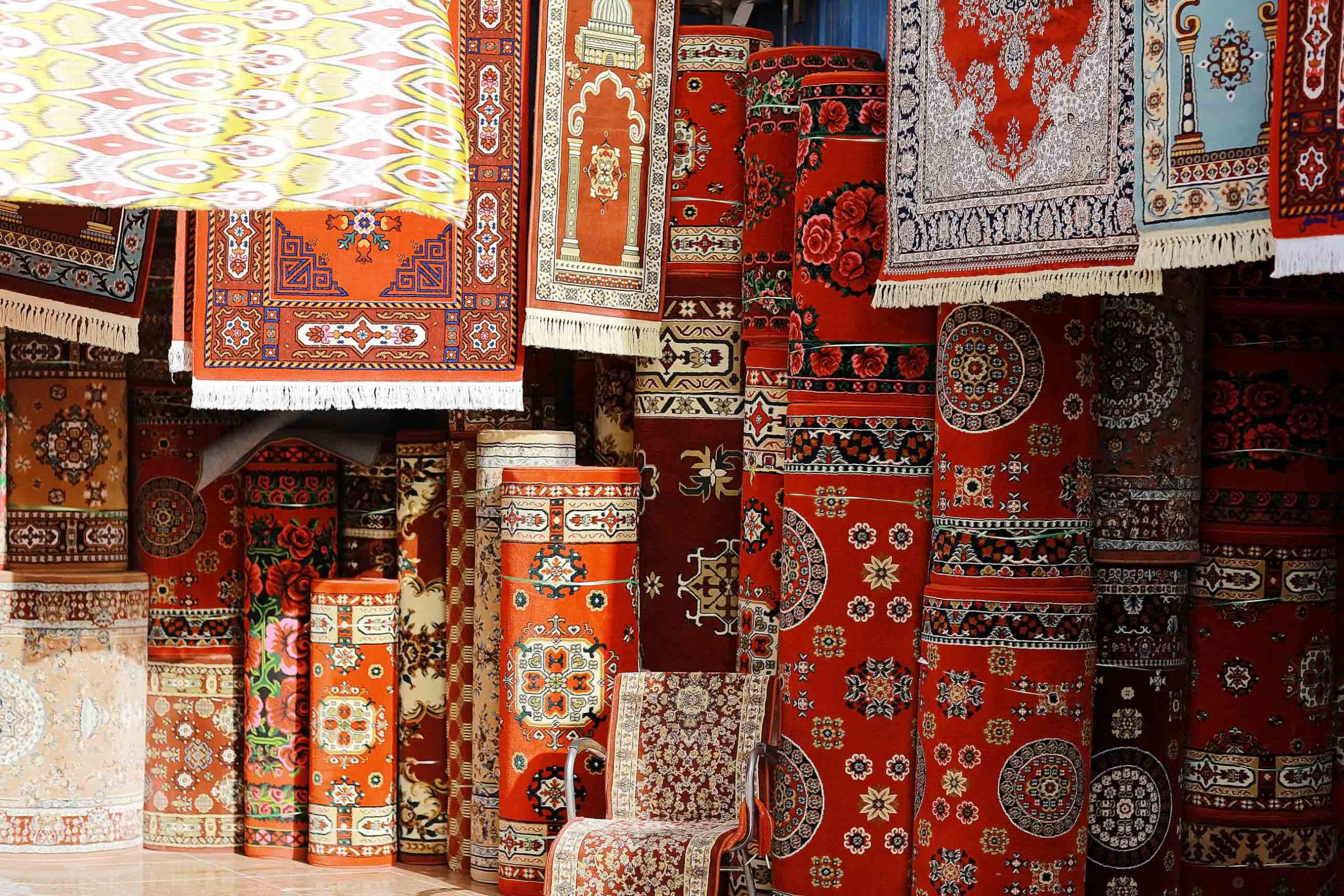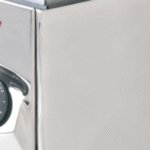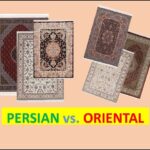Are you on the hunt for the perfect rug to add a touch of elegance to your home? You might have stumbled upon the terms “Persian rugs” and “Oriental rugs” during your search.
At first glance, they may seem interchangeable, but there’s more to these beautiful pieces than meets the eye. Understanding the difference can make a world of difference in your decision-making process. What if you could choose a rug that not only enhances your living space but also tells a story, connects you to a rich cultural history, and becomes a conversation starter every time someone steps into your home?
We’ll unravel the mystique behind Persian and Oriental rugs, helping you make an informed choice that could transform your living space into a work of art. Keep reading to discover which one is right for you and why knowing the distinction might just be the key to unlocking the perfect ambiance in your home.

Credit: www.youtube.com
Origins And History
The world of rugs is vast and fascinating. Persian and Oriental rugs are two major types. Their origins and histories are rich and varied. Understanding their backgrounds helps appreciate their beauty and craftsmanship.
Persian Rugs Background
Persian rugs hail from Iran, formerly known as Persia. They date back to ancient times, around 500 BC. These rugs are deeply tied to Persian culture. They reflect art and history through intricate designs. Craftsmen passed techniques down through generations. Each region in Iran has unique styles. Colors and patterns tell stories of the land and people. Persian rugs are known for their high quality. Hand-knotting methods make them durable and unique.
Oriental Rugs Background
Oriental rugs come from various Asian countries. China, India, Turkey, and Nepal are among them. Their history spans thousands of years. Each region contributes different styles and designs. Chinese rugs often feature dragons and flowers. Indian rugs are famous for their vibrant colors. Turkish rugs have geometric and floral patterns. Oriental rugs are woven using traditional methods. Artisans use wool, silk, and cotton in crafting. These rugs symbolize cultural and artistic heritage.
Design Characteristics
Persian rugs often feature intricate floral designs, while Oriental rugs may display geometric patterns. The color palette of Persian rugs typically includes rich reds and blues. In contrast, Oriental rugs often use softer, earthy tones. Both styles are known for their quality craftsmanship.
The design characteristics of Persian and Oriental rugs captivate enthusiasts worldwide. Both styles boast rich histories and intricate designs. Their unique features set them apart in the world of home decor.Patterns And Motifs
Persian rugs often feature floral designs. The motifs are usually symmetrical. These rugs include medallions at the center. Borders are filled with intricate patterns. Oriental rugs are more diverse in design. They often showcase geometric shapes. Animal motifs are common in these rugs. The design may vary by region. Tribal patterns are a frequent choice.Color Palettes
Persian rugs use warm, rich colors. Reds and blues dominate the palette. Earth tones add depth to the designs. Gold or ivory may highlight the patterns. Oriental rugs are more varied in color. Deep greens and yellows are popular choices. The colors can be more vibrant. Each region has its own palette preferences. Subtle hues create unique contrasts.Materials And Craftsmanship
Persian rugs, crafted with silk and wool, showcase intricate designs. Oriental rugs, often made with cotton, focus on geometric patterns. Both types highlight skilled artisanship and cultural heritage.
When you’re deciding between Persian rugs and Oriental rugs, understanding the materials and craftsmanship can make all the difference. Both types of rugs are renowned for their beauty and durability, but they have distinct characteristics. Let’s explore what makes each one unique through the lens of materials and weaving techniques.Types Of Materials
The materials used in Persian and Oriental rugs are pivotal to their quality and longevity. Persian rugs often utilize high-quality wool, silk, or a blend of both. Wool is known for its durability and warmth, while silk adds a luxurious sheen and softness. Have you ever run your fingers across a silk Persian rug? The texture is unforgettable. Oriental rugs also use wool and sometimes cotton or silk. Wool remains the predominant choice due to its resilience and versatility. The choice of material affects not just the texture but also the rug’s color vibrancy. Wool dyes beautifully, creating rich, lasting colors that can brighten any room.Weaving Techniques
Weaving techniques in Persian and Oriental rugs are a testament to the artisans’ skills. Persian rugs are famous for their fine knotting techniques, like the asymmetrical or “Senneh” knot. This method allows for intricate designs and patterns. Have you considered how many knots per square inch are in a high-quality Persian rug? It can be up to 1,000! Oriental rugs, on the other hand, may use symmetrical or “Ghiordes” knots. This technique results in a denser, more durable rug. The craftsmanship involved in both types of rugs is meticulous, with artisans spending months, sometimes years, to complete a single piece. Can you imagine the patience and precision required? When choosing between these two types of rugs, consider what matters most to you: the luxurious feel of silk or the durability of wool, the intricate patterns of Persian rugs, or the robust texture of Oriental ones. Each choice reflects a different craftsmanship story and material heritage, ready to add character to your living space.
Credit: alexandersrugcare.com
Cultural Significance
The cultural significance of Persian and Oriental rugs is deeply rooted in history and tradition. These rugs are more than just decorative items; they are artistic expressions that tell stories of their origin. Understanding the cultural importance of these rugs can add a new layer of appreciation to your home decor.
Symbolism In Persian Rugs
Persian rugs are well-known for their intricate designs and vibrant colors. They often feature motifs like flowers, animals, and geometric patterns. Each design element carries specific meanings that reflect the values and beliefs of Persian culture.
For instance, floral patterns can symbolize growth and beauty. Animal motifs might represent qualities like courage and protection. When you add a Persian rug to your space, you invite a piece of cultural heritage into your home.
I remember visiting a friend’s home where a Persian rug took center stage in the living room. The rug’s rich colors and detailed patterns sparked conversations about its history and the stories it tells. Have you ever wondered what stories your decor might tell?
Symbolism In Oriental Rugs
Oriental rugs, primarily from regions like Turkey, China, and India, also embody cultural significance. Their designs often include symbols that reflect the cultural and religious beliefs of these diverse regions.
For example, the lotus flower in Chinese rugs can symbolize purity and enlightenment. In Turkish rugs, the tree of life motif is a common representation of immortality and eternal life. Incorporating an Oriental rug into your decor can be a way to celebrate and respect these rich cultural narratives.
During a visit to an art exhibition, I was drawn to an Oriental rug with a striking tree of life design. It was fascinating to learn how such a simple design could hold profound meaning. Is there a piece in your home that holds a story waiting to be told?
By appreciating the cultural significance of Persian and Oriental rugs, you not only enhance your living space but also connect with a rich tapestry of history and tradition. What stories do your home decor pieces tell, and how do they reflect your values and beliefs?
Choosing The Right Rug
Exploring the world of rugs, the choice between Persian and Oriental styles can be intriguing. Persian rugs often feature intricate designs and vibrant colors, while Oriental rugs offer a variety of patterns and textures. Each type brings a unique touch to home decor, enhancing the aesthetic appeal of any space.
Choosing the right rug can transform your space, making it more inviting and stylish. Persian and Oriental rugs both offer unique qualities that can enhance your home. But how do you decide which one fits your needs best? It’s crucial to consider factors like room suitability, size, and placement to make a well-informed choice. Let’s dive into these aspects and find the perfect rug for your home.Room Suitability
When selecting a rug, think about the room’s purpose. Is it a high-traffic area like the living room or a quiet retreat like the bedroom? Persian rugs, known for their intricate designs and rich colors, can add a touch of elegance to formal spaces like dining rooms or offices. However, if your room has a more casual or eclectic vibe, an Oriental rug with its diverse patterns might blend better. Consider your existing décor. You want a rug that complements rather than clashes with your furniture and wall colors. Do you prefer a statement piece or something that subtly ties the room together? Both Persian and Oriental rugs offer a wide range of styles to suit different tastes.Size And Placement
Size matters when choosing a rug. A rug that’s too small can make a room feel disjointed, while an oversized one might overwhelm the space. Measure your area carefully. A good rule of thumb is to allow 18 inches of bare floor around the rug’s edges, but this can vary based on your room’s layout. Think about placement. A Persian rug can act as a focal point under a coffee table, while an Oriental rug might work best as a full-room anchor. How do you want to arrange your furniture around it? Consider how the rug will interact with doorways and other elements in the room. Choosing a rug is not just about aesthetics; it’s about creating harmony in your space. Have you ever noticed how a well-placed rug can change the feel of a room? Pay attention to these details, and you’ll find the perfect rug to enhance your home’s ambiance.Caring For Your Rug
Persian rugs often feature intricate patterns and rich colors, while Oriental rugs showcase diverse designs from various regions. Regular vacuuming and gentle cleaning preserve their beauty. Avoid direct sunlight and moisture to maintain the fabric’s integrity. Proper care ensures these rugs remain stunning for years.
Caring for your Persian or Oriental rug is essential to maintain its beauty and value. These timeless pieces are more than just floor coverings—they’re works of art that tell a story. Whether your rug is a family heirloom or a new purchase, knowing how to care for it ensures it remains a treasured part of your home. Let’s dive into some practical tips to keep your rug looking its best.Cleaning Tips
Start with regular vacuuming. This prevents dirt and dust from getting embedded in the fibers. Use a vacuum without a beater bar to avoid damaging delicate threads. Spot cleaning is crucial when spills occur. Blot, don’t rub, the affected area with a clean, white cloth. Use mild detergent mixed with water for stubborn stains. Rotate your rug every few months to ensure even wear. This simple step can extend the life of your rug significantly.Preservation Methods
Place a rug pad underneath. This not only adds a layer of protection but also keeps your rug from sliding. Avoid direct sunlight exposure. It can fade the vibrant colors over time. If your room gets a lot of sunlight, consider using curtains or shades. Consider professional cleaning every few years. Experts can handle delicate materials and intricate designs with care. Think about this: How often do you check the condition of your rug? Regular inspections can catch small issues before they become big problems. Remember, a little attention goes a long way in preserving the beauty and integrity of your Persian or Oriental rug. Treat your rug with care, and it will continue to enrich your home for years to come.Investment Value
Investing in rugs can be profitable. Persian and Oriental rugs stand out. They are not just decor. They hold cultural value and financial potential. Over the years, their value often appreciates. Understanding their investment value is crucial. Let’s explore what affects their worth and current market trends.
Factors Affecting Value
The age of the rug plays a significant role. Older rugs often have higher value. The material used also matters. Wool, silk, and cotton are common. Silk rugs usually fetch higher prices. The craftsmanship is another key factor. Hand-knotted rugs are more valuable than machine-made ones. The design and rarity of the pattern can increase a rug’s worth. Unique patterns attract collectors. The rug’s condition must be good to retain value. Damaged rugs are less appealing to buyers.
Market Trends
Demand for Persian and Oriental rugs is rising. Collectors and investors see them as assets. The global market shows a steady growth trend. Online platforms make buying and selling easier. This increases accessibility. The appreciation for cultural art boosts their appeal. Younger generations are also showing interest. Sustainability trends favor handmade rugs. They are eco-friendly compared to synthetic ones. These factors contribute to their growing popularity and investment potential.

Credit: stylebyemilyhenderson.com
Frequently Asked Questions
What Are The Main Differences Between Persian And Oriental Rugs?
Persian rugs originate from Iran. Known for intricate designs. Oriental rugs come from other Asian countries. Unique regional patterns.
Are Persian Rugs More Expensive Than Oriental Rugs?
Persian rugs usually cost more. Due to craftsmanship and rarity. Oriental rugs can be more affordable. Depends on design.
How Can I Identify A Real Persian Rug?
Check the rug’s origin tag. Look for Iranian craftsmanship. Examine the intricate designs. Touch the rug’s texture.
Do Persian Rugs Have Specific Color Patterns?
Yes, they often feature deep reds and blues. Rich colors. Symbolic motifs. Reflecting Persian culture and tradition.
Is The Quality Of Oriental Rugs Comparable To Persian?
Yes, many Oriental rugs have high quality. Skilled artisans create them. Quality varies by region. Always inspect before buying.
Conclusion
Choosing between Persian and Oriental rugs depends on your style preference. Persian rugs often boast intricate, detailed designs. Oriental rugs offer a variety of styles from different regions. Both types add elegance to any room. Consider your decor and budget when deciding.
Persian rugs can be more expensive due to craftsmanship. Oriental rugs may offer more variety and affordability. Both enhance the beauty of your space. Explore options and choose what suits your home best. Enjoy the timeless charm rugs bring. Whether Persian or Oriental, each rug tells a story.





